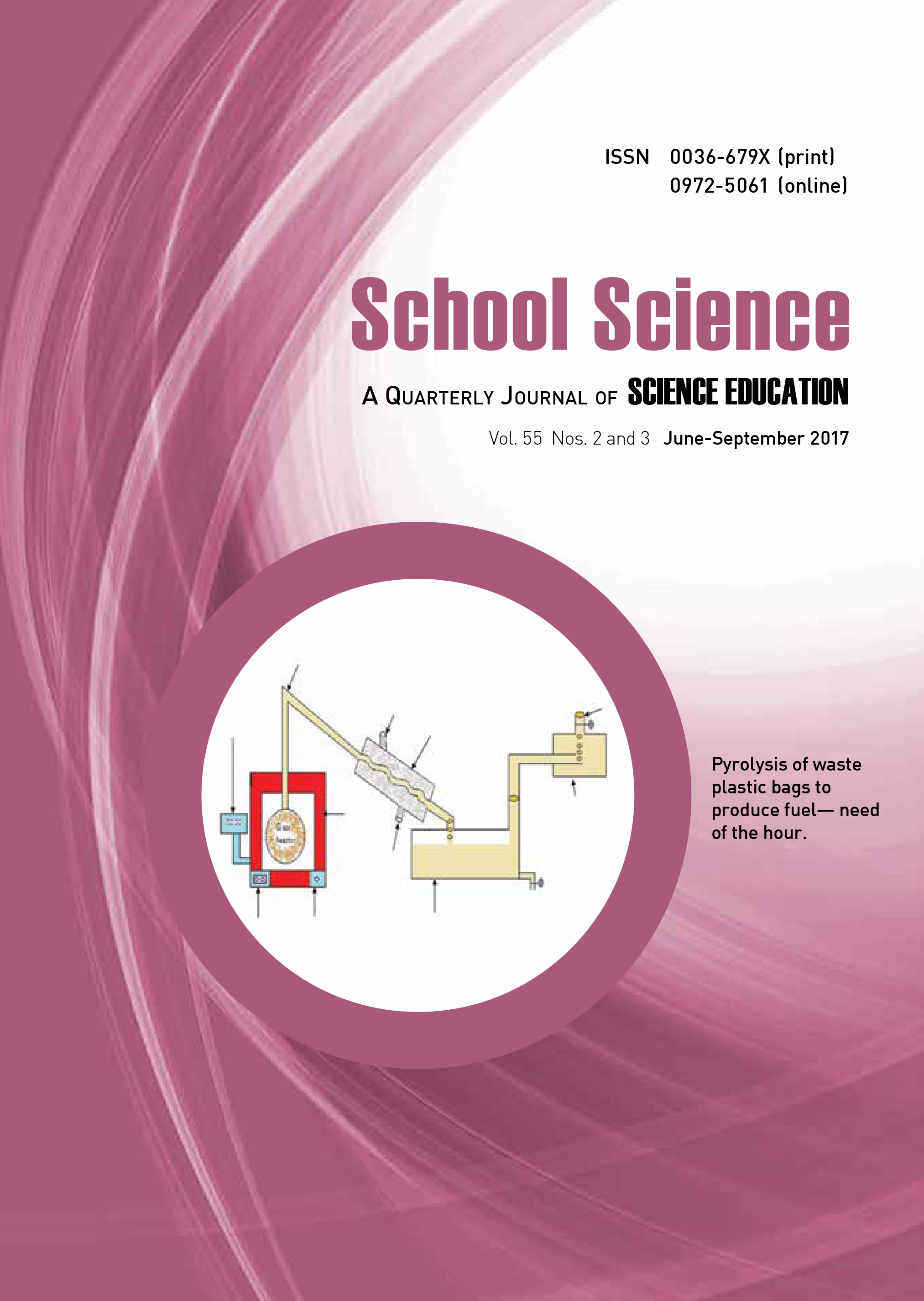The Effectiveness of Hands-on Activity Teaching in Learning Acid and Base Concepts at the Secondary Level

Published 2017-09-30
Keywords
- hands-on activity,
- universal indicators,
- synthetic and natural indicators,
- Acid-base indicators
How to Cite
Abstract
Acids and bases are encountered at every walk of life and their concept is very essential for students. This paper reports the conceptualisation of acids and bases and their identification using synthetic and natural indicators with the help of simple investigations. A study was done on 50 Class VII students of United Public School of Kanpur district of Uttar Pradesh, by making two groups of 25 students each. The students were put in Group A with odd roll numbers while the students with even roll numbers were put in Group B. Group A was taught this concept in traditional way while Group B was taught through investigative hands-on activity approach. An investigative technique using pre- and post-test have been used. The pre-and post-test questionnaire consisting of 25 questions were made and the tests were executed. The response sheets were collected and analysed. The results clearly showed that the Group B with hands-on activity learnt and performed significantly better and there is a significant increase in learning and understanding of the concept of acids and bases. On further analysing the responses it was found that the students of Group B were able to answer High Order Thinking Skill (HOTS) questions in a much better way than the students of Group A. Thus, it can be seen that there is a significant increase in learning and understanding of the concept by the students of Group B. They showed better skill development and were able to draw conclusions correctly. The investigative approach created interest and curiosity in them about the subject. The hands-on activity generated a feel of the subject. The students, for the first time, went to do some experiments on their own. They learnt the concept of acids and bases through doing themselves. This led to a much better learning and performance. Thus, the objectives of the research project were fulfilled.
